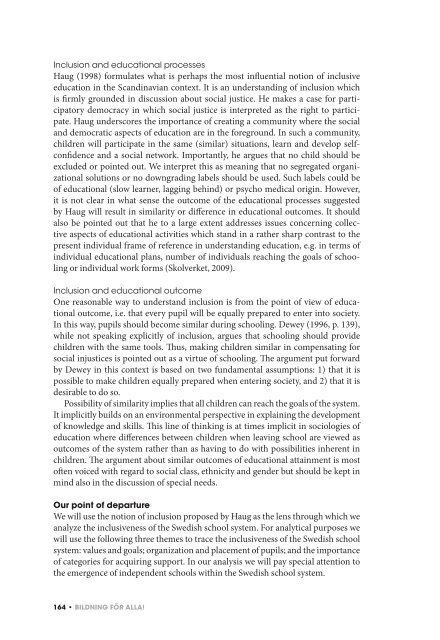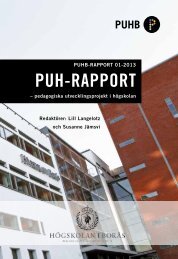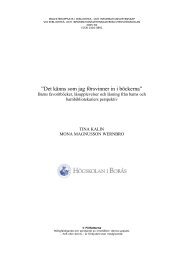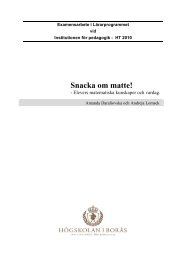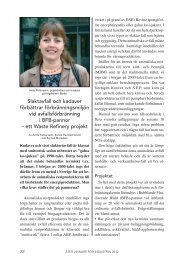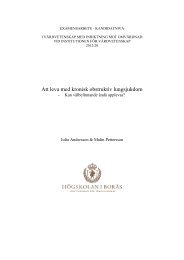Bildning för alla! - DiVA
Bildning för alla! - DiVA
Bildning för alla! - DiVA
Create successful ePaper yourself
Turn your PDF publications into a flip-book with our unique Google optimized e-Paper software.
Inclusion and educational processes<br />
Haug (1998) formulates what is perhaps the most influential notion of inclusive<br />
education in the Scandinavian context. It is an understanding of inclusion which<br />
is firmly grounded in discussion about social justice. He makes a case for participatory<br />
democracy in which social justice is interpreted as the right to participate.<br />
Haug underscores the importance of creating a community where the social<br />
and democratic aspects of education are in the foreground. In such a community,<br />
children will participate in the same (similar) situations, learn and develop selfconfidence<br />
and a social network. Importantly, he argues that no child should be<br />
excluded or pointed out. We interpret this as meaning that no segregated organizational<br />
solutions or no downgrading labels should be used. Such labels could be<br />
of educational (slow learner, lagging behind) or psycho medical origin. However,<br />
it is not clear in what sense the outcome of the educational processes suggested<br />
by Haug will result in similarity or difference in educational outcomes. It should<br />
also be pointed out that he to a large extent addresses issues concerning collective<br />
aspects of educational activities which stand in a rather sharp contrast to the<br />
present individual frame of reference in understanding education, e.g. in terms of<br />
individual educational plans, number of individuals reaching the goals of schooling<br />
or individual work forms (Skolverket, 2009).<br />
Inclusion and educational outcome<br />
One reasonable way to understand inclusion is from the point of view of educational<br />
outcome, i.e. that every pupil will be equally prepared to enter into society.<br />
In this way, pupils should become similar during schooling. Dewey (1996, p. 139),<br />
while not speaking explicitly of inclusion, argues that schooling should provide<br />
children with the same tools. Thus, making children similar in compensating for<br />
social injustices is pointed out as a virtue of schooling. The argument put forward<br />
by Dewey in this context is based on two fundamental assumptions: 1) that it is<br />
possible to make children equally prepared when entering society, and 2) that it is<br />
desirable to do so.<br />
Possibility of similarity implies that all children can reach the goals of the system.<br />
It implicitly builds on an environmental perspective in explaining the development<br />
of knowledge and skills. This line of thinking is at times implicit in sociologies of<br />
education where differences between children when leaving school are viewed as<br />
outcomes of the system rather than as having to do with possibilities inherent in<br />
children. The argument about similar outcomes of educational attainment is most<br />
often voiced with regard to social class, ethnicity and gender but should be kept in<br />
mind also in the discussion of special needs.<br />
Our point of departure<br />
We will use the notion of inclusion proposed by Haug as the lens through which we<br />
analyze the inclusiveness of the Swedish school system. For analytical purposes we<br />
will use the following three themes to trace the inclusiveness of the Swedish school<br />
system: values and goals; organization and placement of pupils; and the importance<br />
of categories for acquiring support. In our analysis we will pay special attention to<br />
the emergence of independent schools within the Swedish school system.<br />
164 • BilDning fÖr AllA!


